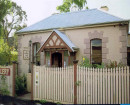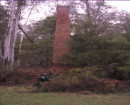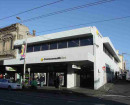FINCHAM & HOBDAY PIPE ORGAN, UNITING CHURCH
325 DORCAS STREET SOUTH MELBOURNE, PORT PHILLIP CITY
-
Add to tour
You must log in to do that.
-
Share
-
Shortlist place
You must log in to do that.
- Download report


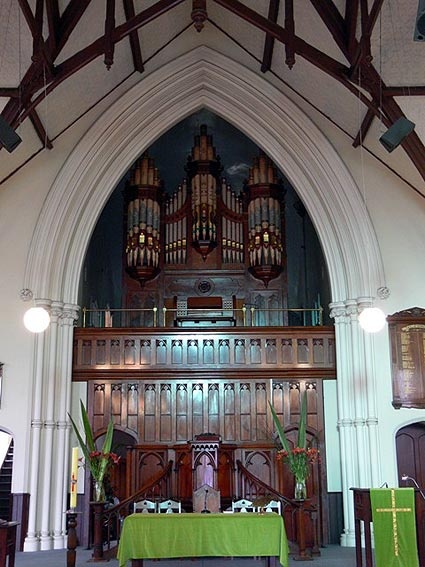
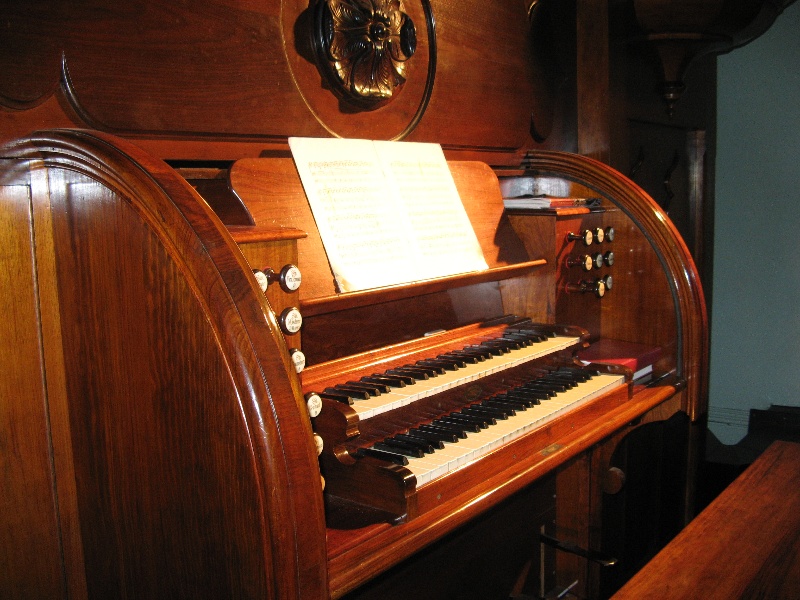
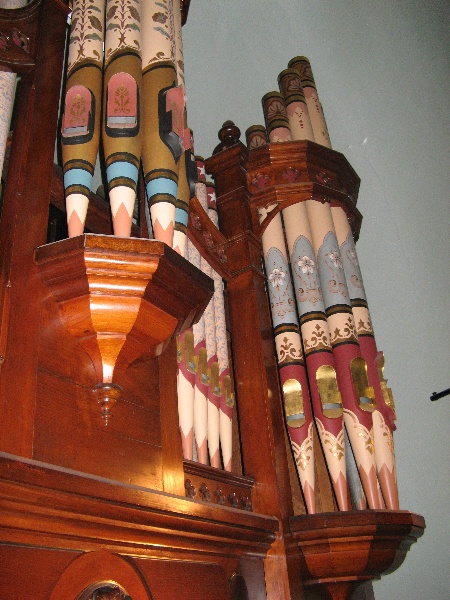
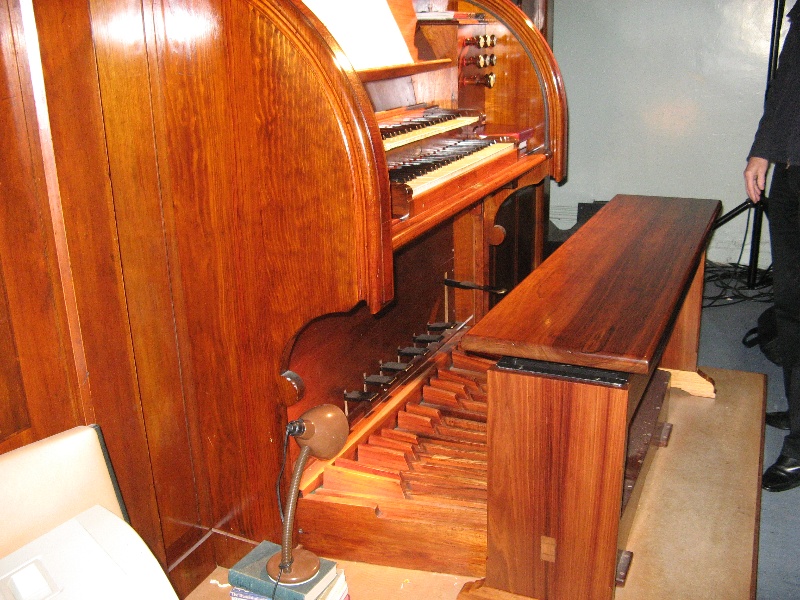
Statement of Significance
This pipe organ was built by Fincham & Hobday in 1891 at a cost of £895 and was installed in a purpose built gallery in the apse of the Emerald Hill Presbyterian Church (now the South Port Parks Uniting Church) in South Melbourne. The church had been designed by the architect William Ireland and opened in 1860. In 1888 the prominent Melbourne organbuilder George Fincham had formed a partnership, under the name of Fincham & Hobday, with Arthur Hobday, who had served his apprenticeship and worked with Fincham since c1865. The partnership survived until 1896, during which time the firm produced a number of pipe organs notable for their high level of finish, excellent voicing of the pipework, beautifully crafted consoles, excellent cases and finely decorated facade pipes. In 1900 the organ was moved forward to the front of the gallery and the console relocated at floor level. An electric blowing plant was added in 1909. Major repairs were made to the organ in 1958 through the Farquhar Chisholm Memorial Organ Fund. In 1985 George Fincham & Sons replaced the console within the organ case and moved the organ back to its original location. The combination action was made entirely pneumatic at this time. Further restoration was carried out in 1996 by S J Laurie Pty Ltd, involving a complete restoration of the action, windchests, console, double-rise reservoir and casework. The facade pipes were restored by Marc Nobel and Christine Holmes.
The Fincham & Hobday pipe organ is located in a fine timber organ gallery in a Gothic arched recess in the apse of the South Port Parks Uniting Church. It is a large two manual instrument, with a finely crafted console and case. The facade pipes have elaborate patterns and colours of outstanding richness and variety.
How is it significant?
The Fincham & Hobday pipe organ in the South Port Parks Uniting Church at South Melbourne is of historical significance to the state of Victoria.
Why is it significant?
The Fincham & Hobday pipe organ is historically significant as a largely unaltered example of the work from the early 1890s of the prominent Melbourne organbuilding firm of Fincham & Hobday. It is the largest Fincham two-manual instrument from the nineteenth century to remain intact. The tonal design and voicing of this instrument display a strong Romantic influence and the organ has added historical importance because it has the largest extant tracker action in Victoria. The fine casework and console, and the elaborately decorated display pipe are excellent examples of the organbuilder's craft.
-
-
FINCHAM & HOBDAY PIPE ORGAN, UNITING CHURCH - History
CONTEXTUAL HISTORY
Fincham & Hobday
From the 1860s the organbuilding industry in Victoria gained momentum at the hands of George Fincham (1828-1910). Developments mainly took place in Victoria, where a tariff gave protection to the craft; elsewhere in Australia the industry was slow to develop.
Fincham had been apprenticed to the leading London organbuilder Henry Bevington in 1842 and later worked as a foreman with J.C. Bishop in London before emigrating to Melbourne in 1852. Building and equipping a new factory in Richmond, his first instrument was completed in 1862. From small beginnings, the firm prospered and by the end of the century had built almost 150 new organs for churches and public halls in four Australian states and New Zealand. Initially adopting mechanical action, the firm developed a new system of tubular-pneumatic action which was used for many instruments from the late 1880s onwards. During the boom period of the 1880s, the firm built no less than 57 instruments, but only 26 were built in the following decade owing to the depression. These were characterised by the use of spotted metal pipework, low wind pressures, generally complete choruses and multi-towered cases.
Arthur Hobday (1851-1912) was born in England and migrated to Victoria with his family in 1853. His father was an organist in Geelong, and Arthur was apprenticed to George Fincham in Melbourne at fourteen years of age, and was subsequently employed by him. In 1881 Fincham sent Hobday to Adelaide to start a branch of Fincham's organbuilding business, and in 1888 he returned to Melbourne to work in partnership with Fincham. The partnership was dissolved in 1896.
Fincham founded the most significant organbuilding enterprise in the colonial period of Australia, which prospered and survived for 130 years through four generations of the Fincham family.
HISTORY OF PLACE
[from the OHTA website]
The foundation stone of the present church, designed and built by William Ireland, was laid on 1 November 1859 and the building opened on 18 March 1860. Further extensions took place in 1867 and later with the erection of the spacious vaulted apsidal organ chamber with vestries beneath, described and illustrated in the Australasian Builder and Contractors' News 30 April 1892:
Our centre page illustration shows the arrangement of the arch and organ-chamber of the Presbyterian Church in Dorcas-street, South Melbourne, which has lately undergone extensive renovation both within and without. Internally, the most noteworthy improvement is the erection of the fine organ which we show - a work which not only reflects high credit upon those concerned in the execution of it, but says much for the increase of liberal thought and culture in the Presbyterian community since the days when the "king of instruments" was regarded as a "kist o' whistles" (as the old-time Scots called it. The successful and satisfactory arrangement of this portion of the building will speak for itself, and is thoroughly appreciated, as we understand, by the Minister of the Church, the Rev. J. Meiklejohn, M.A., and his congregation. The organ-chamber has been so designed as to assist in bringing out the fine tone and volume of sound of the highly-finished instrument it contains, and to show at its best the happy result of Messrs. Fincham and Hobday's (the organ-builders') labors. The general work has been well carried out by Messrs. Seccull and Abbott, contractors, of Melbourne under Messrs. Garis and Son, architects, of the same city; the total cost of the additions, renovations and organ being about £2,900.
The large two manual organ was built by Fincham & Hobday at a cost of £895 and was opened by G.B. Fentum on 28 June 1891. In 1900, the organ was moved forward to the front of the apse gallery and the console resited at floor level, linked with a long mechanical action. At some stage a Gedact 8ft was substituted for the original Clarionet 8ft. In 1985, George Fincham & Sons replaced the console within the organ case and moved the organ backwards to its original location. The combination action was made entirely pneumatic at this time. A further restoration was carried out in 1996 by S.J. Laurie Pty Ltd. The whole instrument was removed from the church. The work included a complete restoration of the action, windchests, console, double-rise reservoir and casework. New wooden trackers were fitted while a facsimile Clarionet 8ft was inserted in place of the later Gedact. The facade pipes were also restored by Marc Nobel and Christine Holmes; these have elaborate patterns and colours of outstanding richness and variety.
FINCHAM & HOBDAY PIPE ORGAN, UNITING CHURCH - Assessment Against Criteria
a. Importance to the course, or pattern, of Victoria's cultural history
The Fincham & Hobday pipe organ is a fine example of the work of the most important organ building company in Victoria in the nineteenth century, which operated as Fincham & Hobday from 1888 until 1996.
b. Possession of uncommon, rare or endangered aspects of Victoria's cultural history.
The Fincham & Hobday organ is the largest Fincham two-manual instrument from the nineteenth century to remain intact.c. Potential to yield information that will contribute to an understanding of Victoria's cultural history.
d. Importance in demonstrating the principal characteristics of a class of cultural places or environments.
e. Importance in exhibiting particular aesthetic characteristics.
f. Importance in demonstrating a high degree of creative or technical achievement at a particular period.
The tonal design and voicing of this instrument display a strong Romantic influence and the organ has added importance because it has the largest extant tracker action in Victoria. The fine casework and console, and elaborately decorated display pipes are excellent examples of the organbuilder's craft.
g. Strong or special association with a particular community or cultural group for social, cultural or spiritual reasons. This includes the significance of a place to Indigenous peoples as part of their continuing and developing cultural traditions.
h. Special association with the life or works of a person, or group of persons, of importance in Victoria's history.
The Fincham & Hobday pipe organ is a largely unaltered example of the work from the early 1890s of the organbuilding firm of Fincham & Hobday. George Fincham founded the most significant organbuilding enterprise in the colonial period of Australia, which prospered and survived for a hundred and thirty years through four generations of the Fincham family. Some of the firm's best work was produced during his partnership with Arthur Hobday in 1888-1896.
FINCHAM & HOBDAY PIPE ORGAN, UNITING CHURCH - Plaque Citation
This fine intact example of late nineteenth century organbuilding, with its well-crafted woodwork and richly decorated pipes, was made for this church in 1891 by the prominent Melbourne organ makers Fincham & Hobday.
FINCHAM & HOBDAY PIPE ORGAN, UNITING CHURCH - Permit Exemptions
General Exemptions:General exemptions apply to all places and objects included in the Victorian Heritage Register (VHR). General exemptions have been designed to allow everyday activities, maintenance and changes to your property, which don’t harm its cultural heritage significance, to proceed without the need to obtain approvals under the Heritage Act 2017.Places of worship: In some circumstances, you can alter a place of worship to accommodate religious practices without a permit, but you must notify the Executive Director of Heritage Victoria before you start the works or activities at least 20 business days before the works or activities are to commence.Subdivision/consolidation: Permit exemptions exist for some subdivisions and consolidations. If the subdivision or consolidation is in accordance with a planning permit granted under Part 4 of the Planning and Environment Act 1987 and the application for the planning permit was referred to the Executive Director of Heritage Victoria as a determining referral authority, a permit is not required.Specific exemptions may also apply to your registered place or object. If applicable, these are listed below. Specific exemptions are tailored to the conservation and management needs of an individual registered place or object and set out works and activities that are exempt from the requirements of a permit. Specific exemptions prevail if they conflict with general exemptions. Find out more about heritage permit exemptions here.Specific Exemptions:General Conditions: 1. All exempted alterations are to be planned and carried out in a manner which prevents damage to the fabric of the registered place or object. General Conditions: 2. Should it become apparent during further inspection or the carrying out of works that original or previously hidden or inaccessible details of the place or object are revealed which relate to the significance of the place or object, then the exemption covering such works shall cease and Heritage Victoria shall be notified as soon as possible. General Conditions: 3. If there is a conservation policy and plan endorsed by the Executive Director, all works shall be in accordance with it. Note: The existence of a Conservation Management Plan or a Heritage Action Plan endorsed by the Executive Director, Heritage Victoria provides guidance for the management of the heritage values associated with the site. It may not be necessary to obtain a heritage permit for certain works specified in the management plan. General Conditions: 4. Nothing in this determination prevents the Executive Director from amending or rescinding all or any of the permit exemptions.Routine maintenance: Pipe Organs require regular servicing particularly tuning and attendance to action problems. Such procedures usually take place monthly, quarterly, half yearly or annually. Such activities would not impact in any way on the heritage status of the instrument provided they are carried out by appropriate firms, and would not require a permit.
FINCHAM & HOBDAY PIPE ORGAN, UNITING CHURCH - Permit Exemption Policy
All conservation, maintenance and repair works should be carried out in accordance with the standards outlined in the document produced by the NSW Heritage Office in consultation with the Organ Historical Trust of Australia, Pipe Organ Conservation and Maintenance Guide, specifically points numbered 1, 2 and 3. All other works require a permit. The preparation of a Conservation Management Plan is encouraged.
1. Cleaning and overhaul: This should ideally take place around every ten to fifteen years depending on the location of the organ. If pipework is removed from an organ for cleaning, it should never receive any revoicing or alteration.
2. Restoration: This work should always be carried out in association with an approved independent professional consultant who would develop a schedule for the work and nominate accredited organbuilders from whom quotations can be sought. The consultant can assist with the obtaining of relevant permits from Heritage Victoria, liaise with the custodian of the instrument (and Heritage Victoria) as the work proceeds, and sign off the work when it is completed according to the original schedule, write a report and authorize final payments. All work should conform with the Conservation and Maintenance Guide noted above.
3. Other work may be necessary from time to time, such as renewal of electric blowing plants, re-leathering of reservoirs, etc. Permits should be sought for such work to ensure that they comply with heritage standards.
4. Activities involving alteration to instruments (such as changes to action, pipework and case decoration) would, in most instances, fall outside what is permissible.
-
-
-
-
-
ALBERT PARK PRIMARY SCHOOL
 Victorian Heritage Register H1629
Victorian Heritage Register H1629 -
BILTMORE (ALBERT PARK)
 Victorian Heritage Register H0475
Victorian Heritage Register H0475 -
ALBERT PARK RAILWAY STATION COMPLEX
 Victorian Heritage Register H1558
Victorian Heritage Register H1558
-
"1890"
 Yarra City
Yarra City -
'BRAESIDE'
 Boroondara City
Boroondara City -
'ELAINE'
 Boroondara City
Boroondara City
-
-






